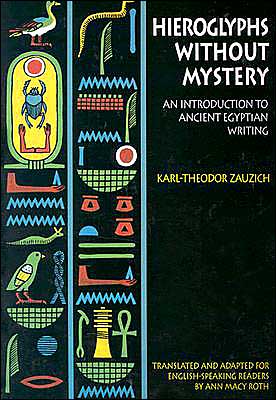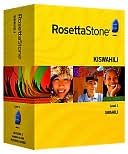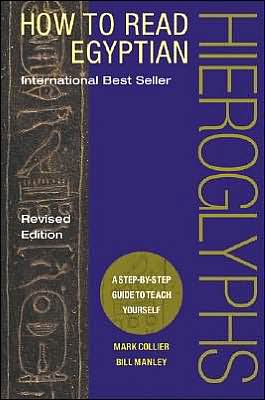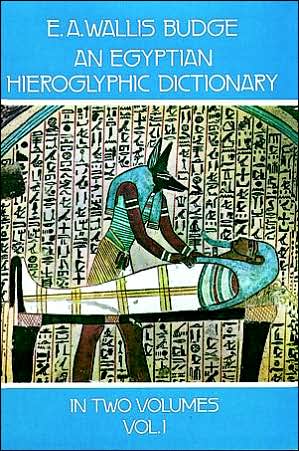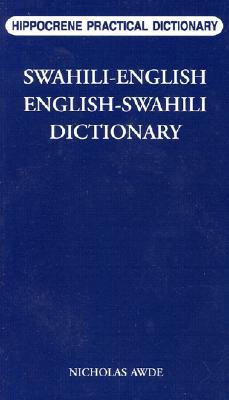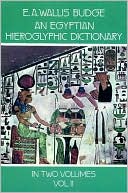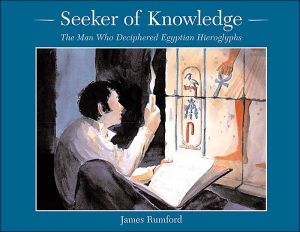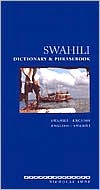Hieroglyphs Without Mystery: An Introduction to Ancient Egyptian Writing
Marveling over the tomb treasures of Ramses II and Tutankhamen that have toured U.S. and European museums in recent years, visitors inevitably wonder what the mysterious hieroglyphs that cover their surfaces mean. Indeed, everyone who is fascinated by ancient Egypt sooner or later wishes for a Rosetta stone to unlock the secrets of hieroglyphic writing.\ Hieroglyphs without Mystery provides the needed key. Written for ordinary people with no special language skills, the book quickly...
Search in google:
Marveling over the tomb treasures of Ramses II and Tutankhamen that have toured U.S. and European museums in recent years, visitors inevitably wonder what the mysterious hieroglyphs that cover their surfaces mean. Indeed, everyone who is fascinated by ancient Egypt sooner or later wishes for a Rosetta stone to unlock the secrets of hieroglyphic writing.Hieroglyphs without Mystery provides the needed key. Written for ordinary people with no special language skills, the book quickly demonstrates that hieroglyphic writing can be read, once a few simple principles are understood. Zauzich explains the basic rules of the writing system and the grammar and then applies them to thirteen actual inscriptions taken from objects in European and Egyptian museums. By following his explanations and learning the most commonly used glyphs, readers can begin to decode hieroglyphs themselves and increase their enjoyment of both museum objects and ancient Egyptian sites.Even for the armchair traveler, learning about hieroglyphs opens a sealed door into ancient Egyptian culture. In examining these inscriptions, readers will gain a better understanding of Egyptian art, politics, and religion, as well as language.This popular book was originally published in Germany in 1980 as Hieroglyphen ohne Geheimnis.
ForewordTranslator's Preface1Generalities11.1Not for Geniuses Only11.2Beauty as a Rule for Spelling21.3Pictures but Not Picture Writing41.4How Egyptologists Speak Egyptian61.5What Is Transliteration?92The Writing System112.1The Egyptian Alphabet112.2Biliteral Signs172.3The Phonetic Complement222.4Triliteral Signs232.5Ideograms (Sense-Signs)242.6Determinatives262.7Graphic Peculiarities and Abbreviations292.8Complication and Simplification342.9A Little Grammar352.9.1Grammatical Gender352.9.2The Plural and the Dual362.9.3Genitive Constructions382.9.4Suffix Pronouns392.9.5Adjectives423Examples443.1An Architrave of Sahure443.2A Glazed Tile from the Palace of Ramesses II at Qantir473.3Lintel from a Temple or Palace of Ramesses II503.4Fragment of a Tomb Wall533.5A Wooden Box from the Treasures of Tutankhamun553.6Tutankhamun's Alabaster Chest593.7The Alabaster Cup of Tutankhamun653.8A Canopic Coffin of Tutankhamun673.9The Canopic Chest of Tutankhamun703.10Vignette from a Book of the Dead743.11The False Door of Khut-en-Ptah813.12The Tomb Stela of Tashep-Khonsu853.13The Hieroglyphs on the Cover: A Temple Inscription884Conclusion914.1Selected Royal Names914.2Names of Gods934.3Further Study of Hieroglyphs955Appendixes985.1Solutions to the Problems985.2Books on Egyptian Vocabulary and Grammar1015.3Hieroglyphic Sign List1035.4Museum Numbers and Photo Credits for the Objects Discussed120
